Do you have questions about our sensors?
Contact our torque sensor and force sensor experts for advice.


The sizing of the sensor depends on the customer's spatial requirements. Various customer requirements can be met through a modular kit. Even small dimensions can be achieved through close collaboration.
Direct integration into the customer's application can also be realized through appropriate design and dimensioning of the mechanical and electrical interfaces.

The sizing of the sensor depends on the customer's spatial requirements. Various customer requirements can be met through a modular kit. Even small dimensions can be achieved through close collaboration.
Direct integration into the customer's application can also be realized through appropriate design and dimensioning of the mechanical and electrical interfaces.

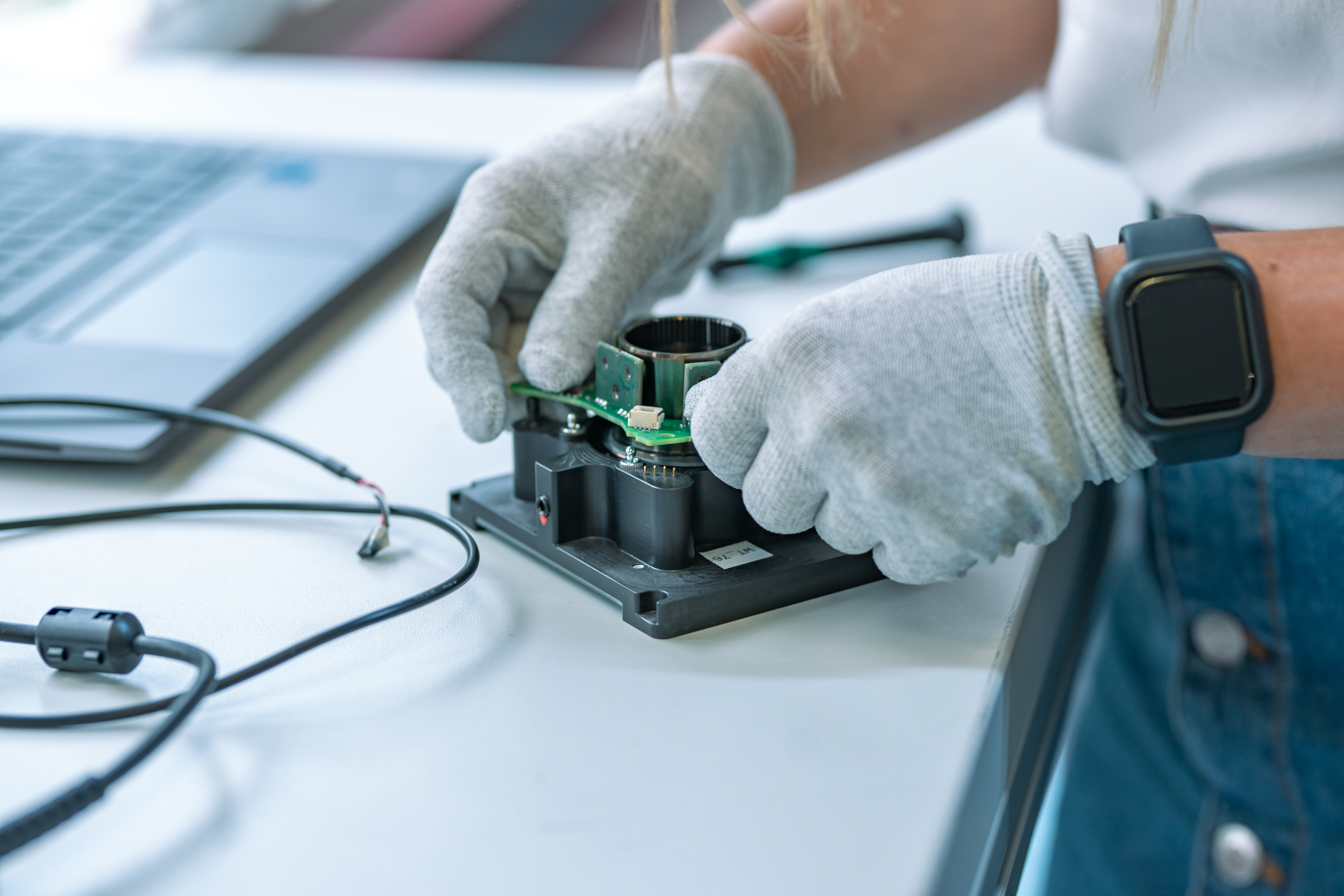
The sensor requires a 5V power supply. The current consumption is approximately 100mA at 5V. The output signal for the customer can be specifically designed.
Standard interfaces already implemented (SPI, UART, CAN) can be configured according to customer specifications.
The standard signal bandwidth of the sensor is 100Hz with a signal-to-noise ratio of < 0.1% FS.
By adjusting the internal signal processing, the output signal can be adjusted to up to 1kHz.

The standard signal bandwidth of the sensor is 100Hz with a signal-to-noise ratio of < 0.1% FS.
By adjusting the internal signal processing, the output signal can be adjusted to up to 1kHz.

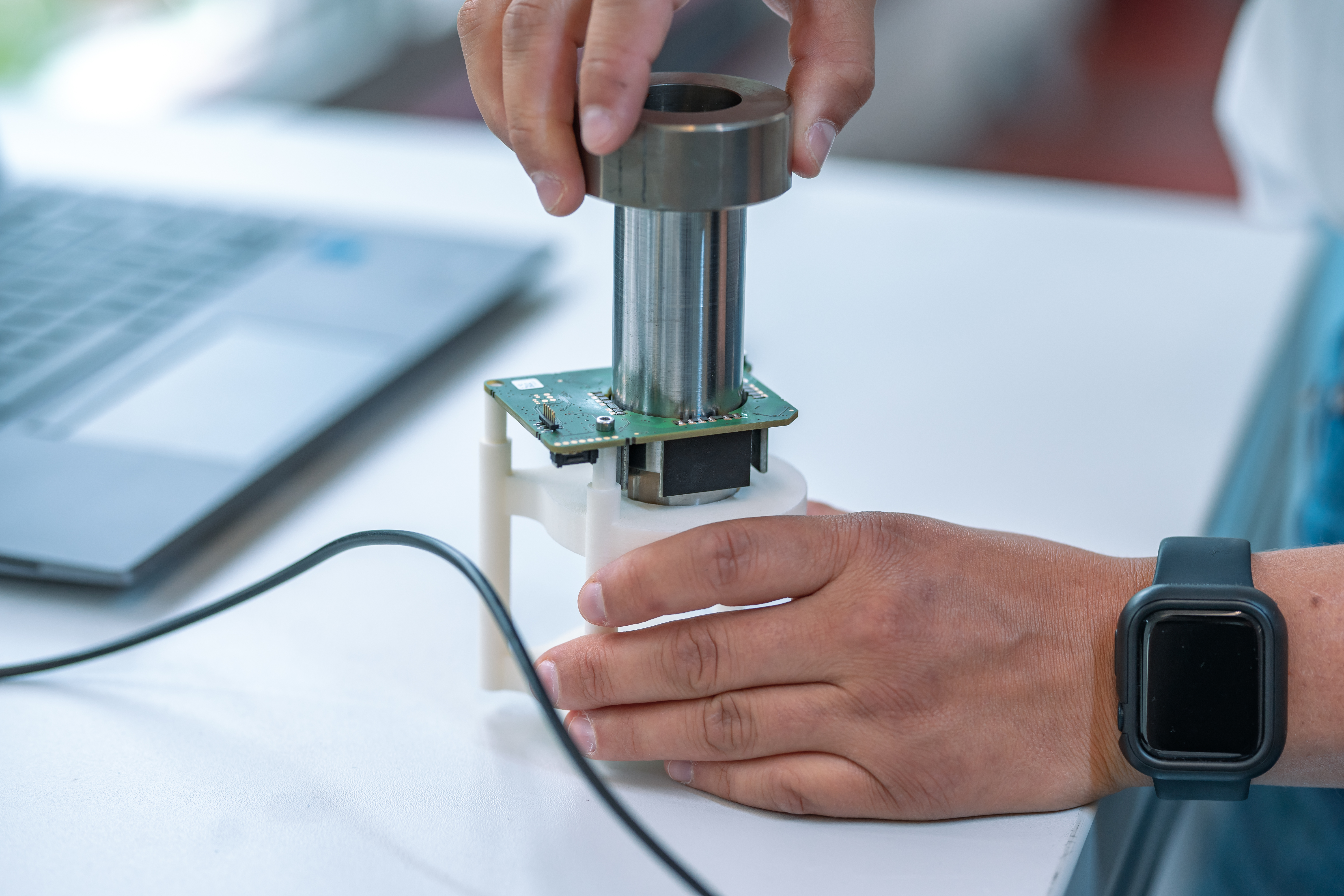
The sizing and orientation of the measuring coils define which mechanical forces can be measured. Customers who require measurement of multiple force vectors, such as torque and axial forces, can be accommodated through a customized design and appropriate configuration of the sensor. Additionally, bending forces can be determined through the analysis of measurement data. The sensor technology is designed in such a way that various measurement tasks can be addressed through minor constructive adjustments.
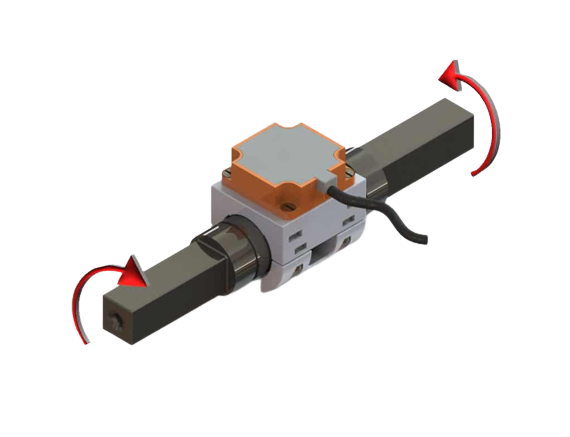
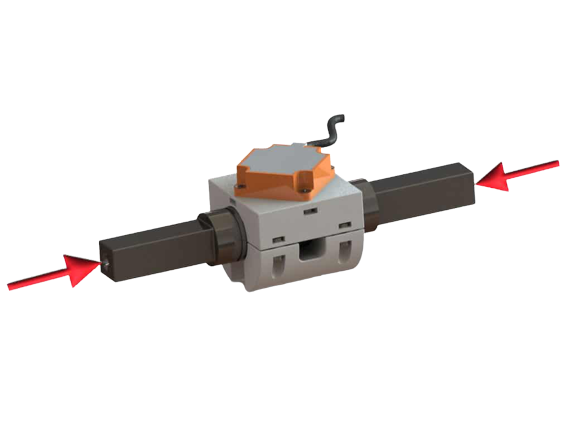
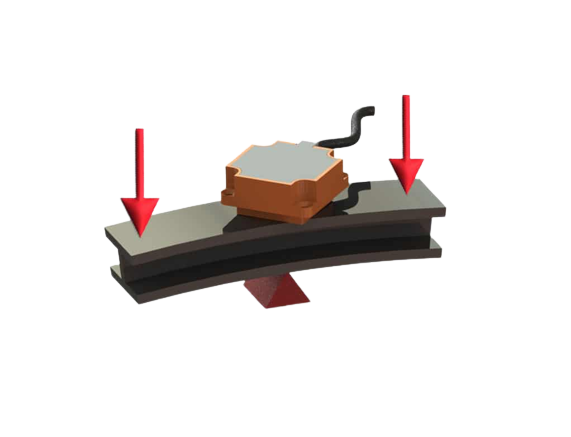
An important requirement for the use of the technology is that the measuring shaft is made of a ferromagnetic material and is hardened. We are happy to recommend suitable materials for the shafts and the hardening in an initial discussion. It is important for our customers that the measuring shaft is part of the sensor and that the system must be coordinated in a collaboration.
The dimensioning of the shaft and the safety factor for overload determine the expected accuracies in the application.
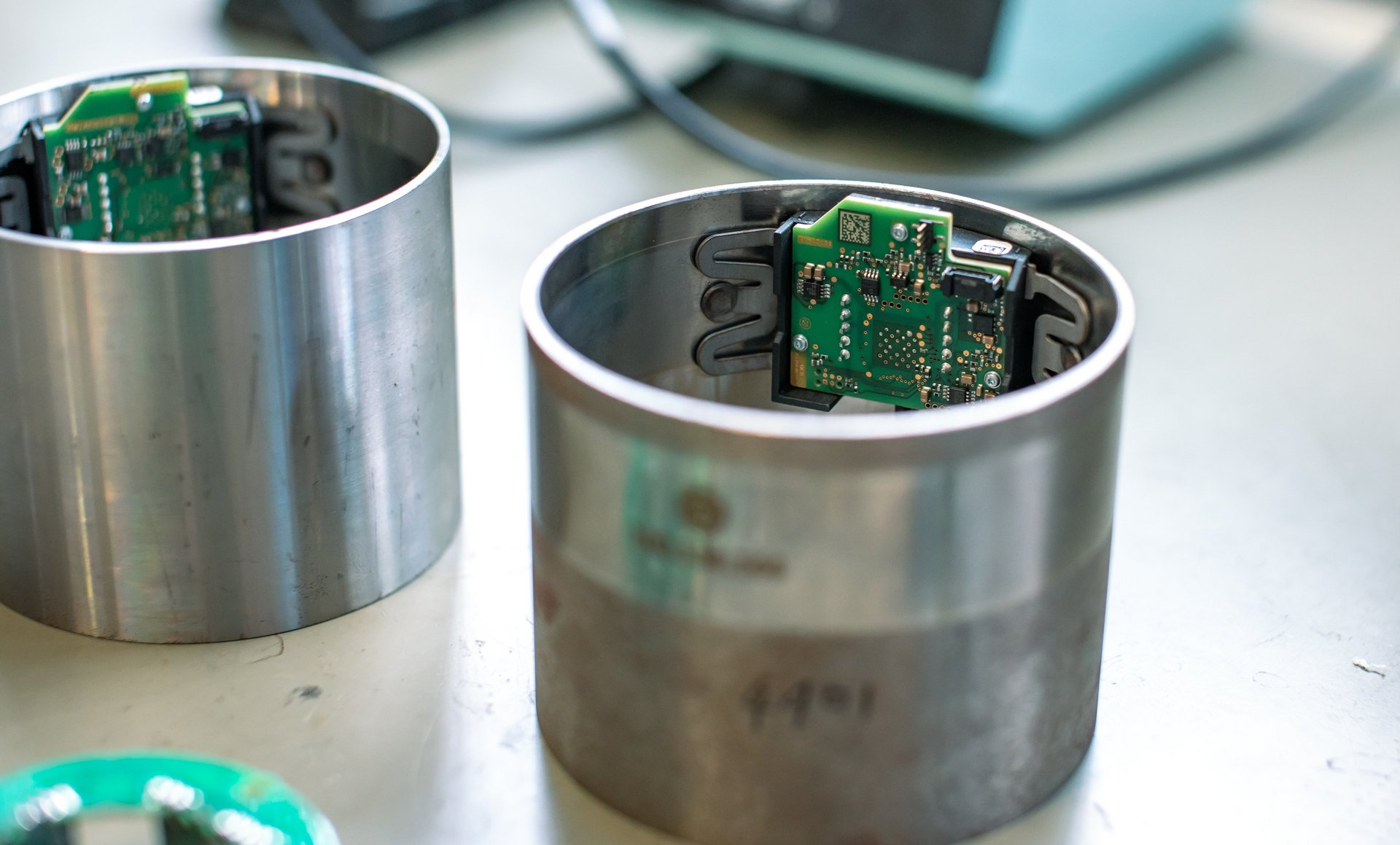
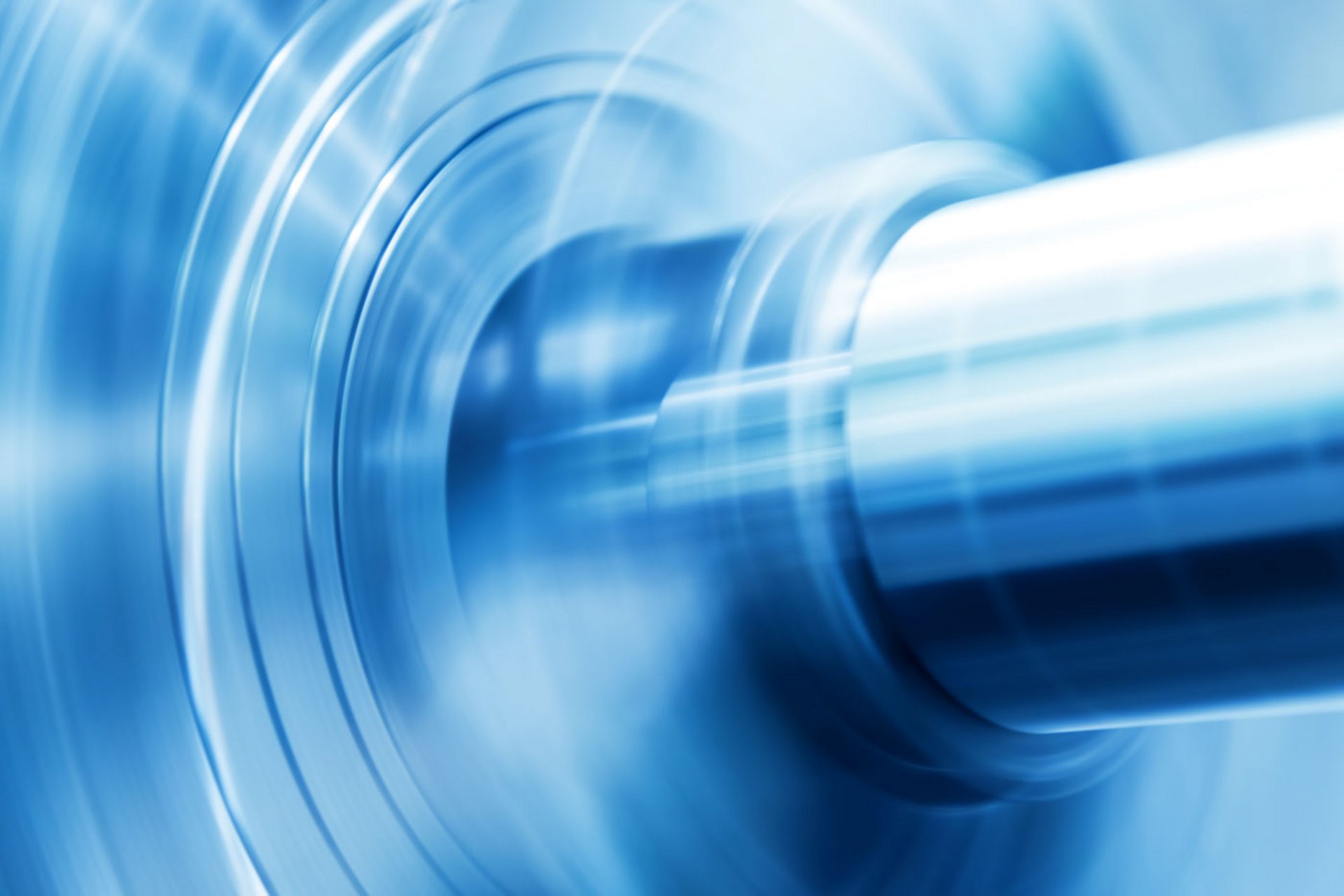
The proper sizing of the sensor housing and its integration into the customer's application is a crucial factor for accuracy and robustness in the application. The sensor mounting should be designed to minimize movement relative to the measuring point. We recommend placing the sensor as close as possible to a shaft bearing or shaft support. The active sensor module can be positioned inline with the test object or tangentially to the cross-section of the shaft.

The proper sizing of the sensor housing and its integration into the customer's application is a crucial factor for accuracy and robustness in the application. The sensor mounting should be designed to minimize movement relative to the measuring point. We recommend placing the sensor as close as possible to a shaft bearing or shaft support. The active sensor module can be positioned inline with the test object or tangentially to the cross-section of the shaft.
To enable reliable torque measurement, the sensor module does not need to touch the test object. The sensor can be dimensioned with a distance of up to 1mm from the measuring point.
However, it should be noted that the distance from the sensor to the measuring shaft affects the measurement accuracy. The distance of the sensor from the measuring shaft defines the sensitivity of the overall system; that is, the closer the sensor is to the measuring shaft, the larger the signal.

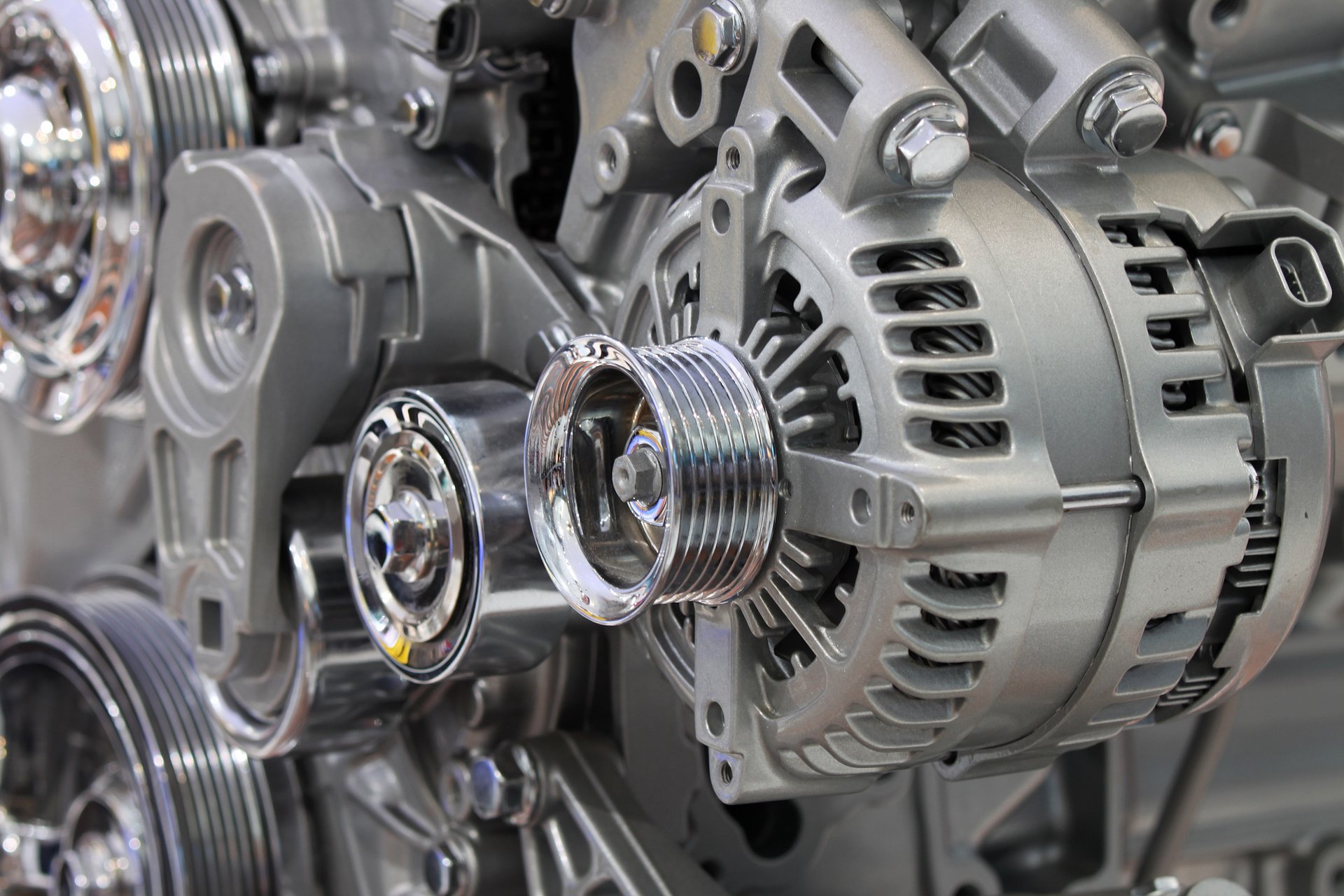
Depending on the requirements for measurement accuracy and the task at hand, one or more sensors can be used. By using multiple sensors and the resulting statistics, various measurement effects can be suppressed. In specific OEM applications, different sensors can also be integrated into a single sensor module. For example, a torque sensor (left) or two torque sensors (right) can be placed closest to the surface of a rotating shaft (test object). The torque sensor will capture and measure the selected forces.

Depending on the requirements for measurement accuracy and the task at hand, one or more sensors can be used. By using multiple sensors and the resulting statistics, various measurement effects can be suppressed. In specific OEM applications, different sensors can also be integrated into a single sensor module. For example, a torque sensor (left) or two torque sensors (right) can be placed closest to the surface of a rotating shaft (test object). The torque sensor will capture and measure the selected forces.
Mechanical shocks or vibrations can affect the sensor signal, so it is important to mount and align the sensor correctly. By implementing suitable measures in the sensor's design, potential disturbances can be identified and limited in collaboration with the customer during the early stages of the development process. Proper sensor mounting and positioning are essential for obtaining accurate measurement results in the application.
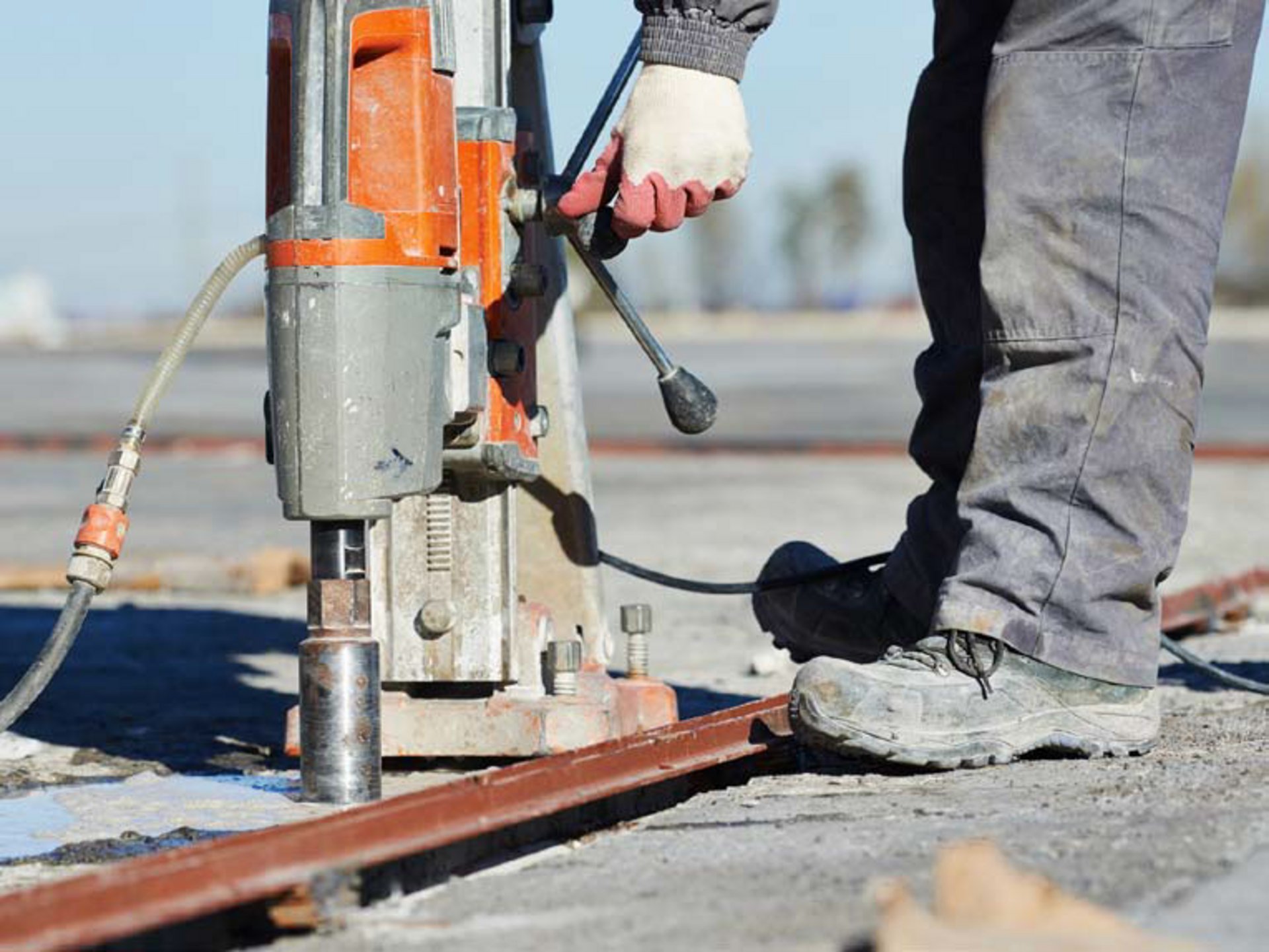
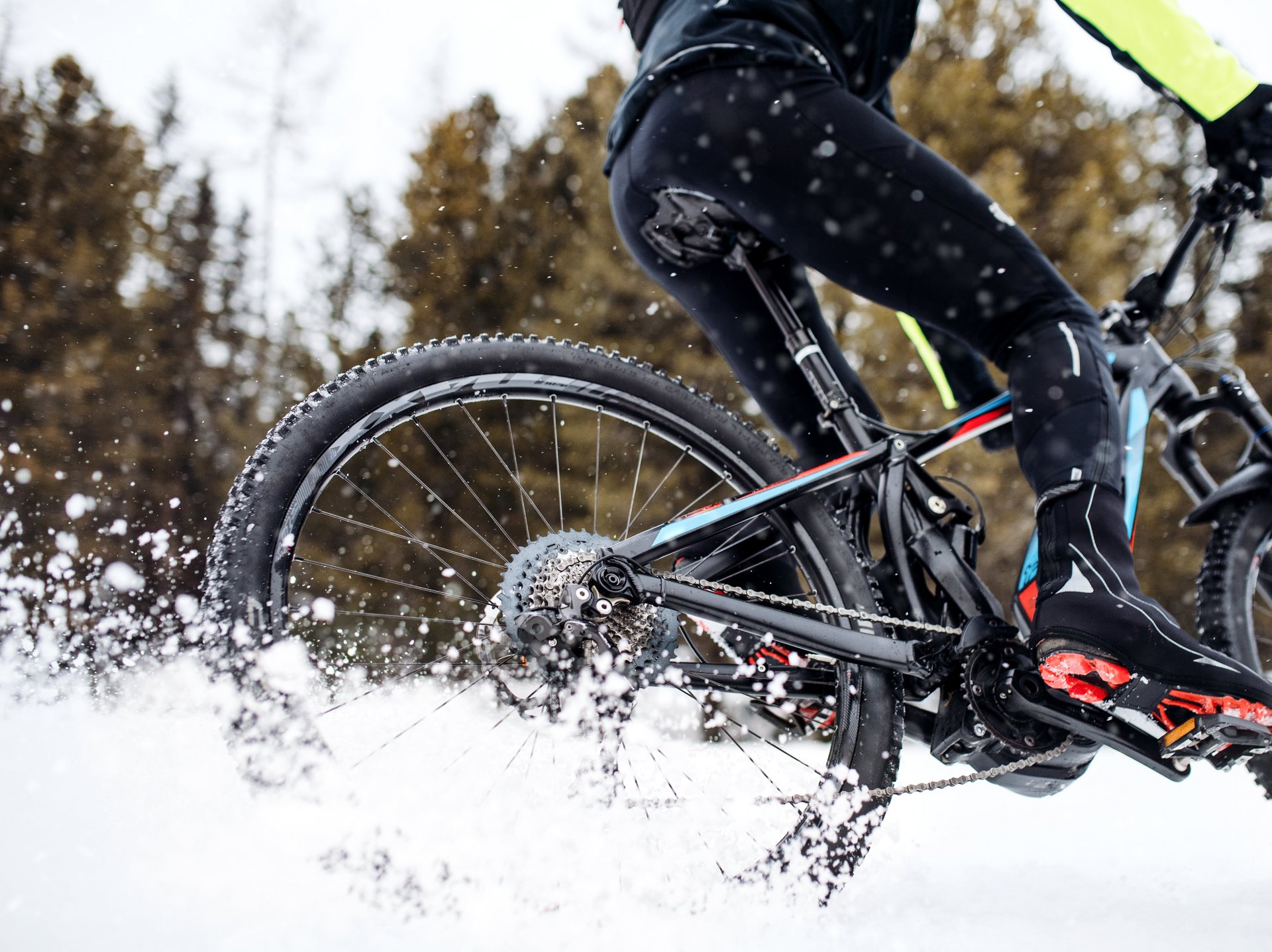
The components of the sensor are selected to meet most industrial requirements from -40°C to 105°C.
By selecting other components, the temperature range can also be extended to 125°C.

The components of the sensor are selected to meet most industrial requirements from -40°C to 105°C.
By selecting other components, the temperature range can also be extended to 125°C.
Contact our torque sensor and force sensor experts for advice.